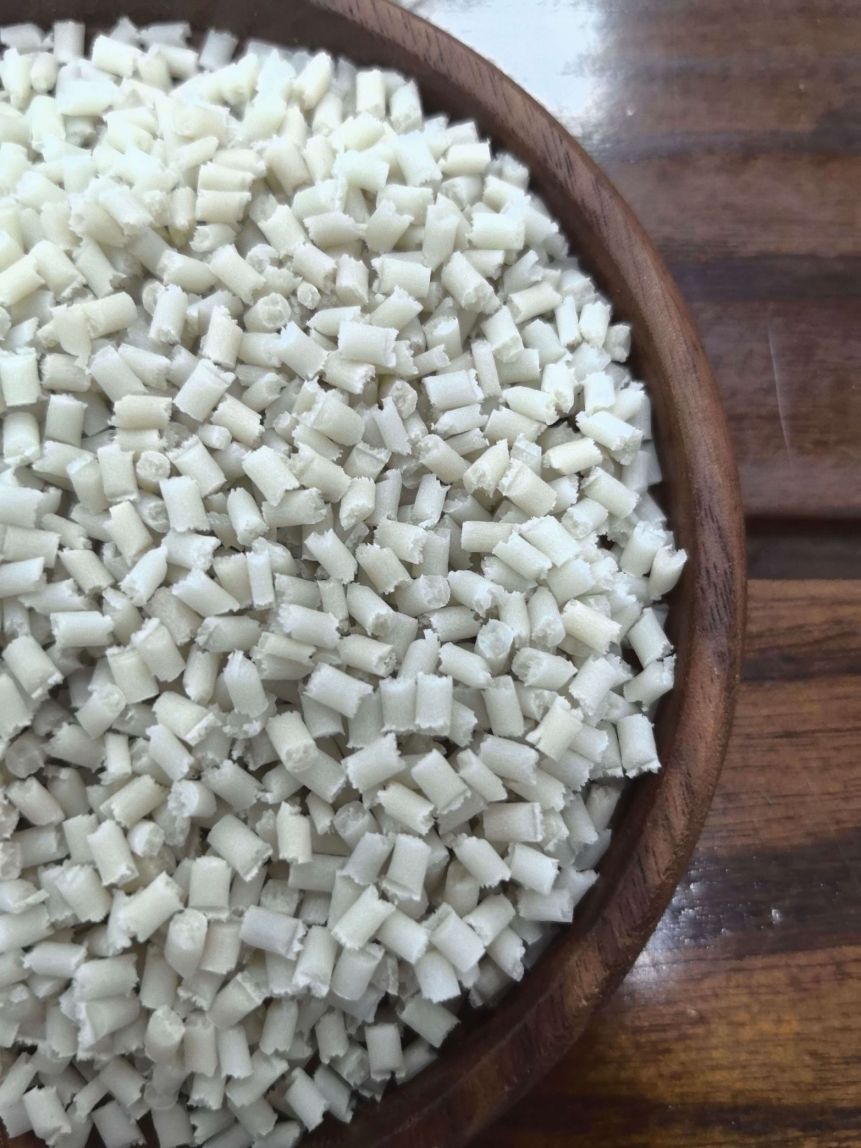مقدمة
يعد اختيار مادة بلاستيك PA المناسبة أمرًا بالغ الأهمية لضمان الأداء الأمثل والقيمة المثلى في تطبيقك. يأتي بلاستيك PA، المعروف بقوته العالية وصلابته ومقاومته الممتازة للتآكل والتلف، في أنواع مختلفة، لكل منها خصائص فريدة. سيساعدك هذا الدليل على تحديد بلاستيك PA المحدد الذي يلبي احتياجاتك على أفضل وجه.

مقدمة من مادة البلاستيك PA
عندما يتعلق الأمر باختيار مادة بلاستيك PAفإن فهم متطلبات التطبيق الخاص بك هو المفتاح. سواءً كانت البيئة التشغيلية أو الأداء الميكانيكي أو المظهر الجمالي، يلعب كل عامل دورًا حيويًا في تحديد أنسب مادة PA. يرشدك هذا الدليل إلى الاعتبارات اللازمة لاتخاذ قرار مستنير.
تقييم البيئة التشغيلية
درجة الحرارة والضغط والتعرض للمواد الكيميائية
تتمثل الخطوة الأولى في اختيار بلاستيك PA المناسب في تقييم الظروف البيئية التي سيواجهها. ضع في اعتبارك عوامل مثل درجة الحرارة والضغط والتعرض الكيميائي، والتي يمكن أن تؤثر بشكل كبير على أداء المادة. تتفوق أنواع مختلفة من بلاستيك PA في بيئات مختلفة بسبب خصائصها الميكانيكية المتميزة.
- PA6: مثالي للتطبيقات التي تتطلب قوة تأثير عالية ومقاومة للتآكل. يشيع استخدامه في قطع غيار السيارات والمعدات الرياضية والعوازل الكهربائية.
- PA66: معروف بمقاومته الفائقة للمواد الكيميائية، مما يجعله مناسبًا للتطبيقات التي تتضمن مواد كيميائية قاسية أو درجات حرارة مرتفعة.
تحديد المتطلبات الميكانيكية
المتانة والصلابة ومقاومة التآكل
يتم اختيار مواد بلاستيك PA لخصائصها الميكانيكية الرائعة. ومع ذلك، توفر أنواع مختلفة من PA مستويات مختلفة من القوة والصلابة ومقاومة التآكل. من الضروري مطابقة هذه الخصائص مع الاستخدام الخاص بك لضمان المتانة والموثوقية.
على سبيل المثال
- PA6: يوفر مزيجًا متوازنًا من المتانة والمرونة، مما يجعله مثاليًا للمكونات التي تتعرض للتآكل والتلف بشكل كبير.
- PA66: يوفر صلابة وثباتًا حراريًا معززًا ومناسبًا للبيئات عالية الضغط.
مراعاة الاحتياجات الجمالية والتصنيعية
تقنيات المظهر والمعالجة
كما يؤثر المظهر المرغوب وعملية التصنيع المرغوبة لمنتجك النهائي على اختيار بلاستيك PA الخاص بك. يمكن معالجة مواد السلطة الفلسطينية باستخدام تقنيات مختلفة مثل القولبة بالحقن والبثق والقولبة بالنفخ لتحقيق أشكال وتشطيبات سطحية مختلفة.
- PA6TG: متوفر في أشكال شفافة ومناسبة للتطبيقات التي تتطلب رؤية واضحة.
- اختر عملية التصنيع بناءً على مدى تعقيد وتصميم منتجك لضمان كفاءة الإنتاج والجودة المثلى.
تقييم الأثر البيئي
اعتبارات الاستدامة ونهاية العمر الافتراضي
في عالم اليوم الذي يتسم بالوعي البيئي، يُعد التأثير البيئي لخياراتك من بلاستيك السلطة الفلسطينية اعتبارًا بالغ الأهمية. توفر بعض أنواع بلاستيك PA خيارات أكثر استدامة مع انخفاض استهلاك الطاقة الإنتاجية وقابلية إعادة التدوير.
- PA6I: خيار قابل للتحلل الحيوي يحافظ على خواص ميكانيكية مماثلة لـ PA6 التقليدي، مما يجعله خيارًا صديقًا للبيئة للتطبيقات التي تمثل فيها الاستدامة أولوية.
الخاتمة
يعد اختيار المادة البلاستيكية المناسبة من البلاستيك PA عملية متعددة الأوجه تتضمن تقييم البيئة التشغيلية والمتطلبات الميكانيكية والاحتياجات الجمالية والتأثير البيئي. من خلال الفهم الدقيق لهذه العوامل، يمكنك التأكد من أن المادة البلاستيكية PA المختارة لا تلبي معايير الأداء الخاصة بك فحسب، بل توفر أيضًا أفضل قيمة لاستثمارك. اتخذ قرارًا مستنيرًا لتعزيز الكفاءة والمتانة والاستدامة في استخدامك.
الأسئلة الشائعة حول اختيار مواد بلاستيك السلطة الفلسطينية
1. ما هي مادة البلاستيك PA، ولماذا هي مهمة؟
بلاستيك البولي أميد (PA) هي مجموعة من المواد البلاستيكية الحرارية المعروفة بقوتها العالية وصلابتها ومقاومتها الممتازة للتآكل والتمزق. وهي ذات أهمية بالغة في مختلف الصناعات نظراً لخصائصها المتنوعة وقدرتها على الأداء الجيد في ظل الظروف البيئية المختلفة.
2. كيف يمكنني تحديد المادة البلاستيكية PA الأفضل لاستخدامي؟
لاختيار بلاستيك السلطة الفلسطينية المناسب، ضع في اعتبارك العوامل التالية:
- البيئة التشغيلية: تقييم درجة الحرارة والضغط والتعرض الكيميائي.
- المتطلبات الميكانيكية: تحديد القوة والصلابة ومقاومة التآكل المطلوبة.
- الاحتياجات الجمالية والتصنيعية: النظر في المظهر المطلوب وتقنيات المعالجة المناسبة.
- الأثر البيئي: تقييم الاستدامة وقابلية إعادة التدوير.
3. ما هي الاختلافات الرئيسية بين PA6 و PA66؟
- PA6: معروف بقوة صدماته العالية ومقاومته للتآكل. يشيع استخدامه في قطع غيار السيارات والمعدات الرياضية والعوازل الكهربائية.
- PA66: يوفر مقاومة فائقة للمواد الكيميائية وهو مثالي للتطبيقات التي تنطوي على التعرض للمواد الكيميائية القاسية أو درجات الحرارة العالية.
4. ما الذي يجب مراعاته بشأن البيئة التشغيلية للمواد البلاستيكية للسلطة الفلسطينية؟
عند تقييم البيئة التشغيلية، ضع في اعتبارك:
- درجة الحرارة: مدى سخونة أو برودة البيئة.
- الضغط: مستويات الإجهاد الميكانيكي الذي ستتعرض له المادة.
- التعرض للمواد الكيميائية: أنواع المواد الكيميائية التي ستتلامس معها المادة.
5. كيف يكون أداء مادة البلاستيك PA في الظروف الميكانيكية المختلفة؟
يشتهر بلاستيك PA بخصائصه الميكانيكية القوية، ولكن يمكن أن يتفاوت أداؤه:
- PA6: يوفر توازنًا جيدًا بين الصلابة والمرونة، وهو مثالي للاستخدامات التي تتسم بالتآكل والتلف الشديد.
- PA66: يوفر صلابة وثبات حراري أعلى، ومناسب للبيئات عالية الضغط.
6. ما هي تقنيات التصنيع المناسبة لمواد البلاستيك PA؟
يمكن معالجة بلاستيك PA باستخدام عدة تقنيات اعتمادًا على تصميم المنتج:
- القولبة بالحقن: الأفضل لإنتاج الأشكال المعقدة ذات الأبعاد الدقيقة.
- البثق: مثالية للمقاطع الجانبية المستمرة مثل الأنابيب والقضبان.
- القولبة بالنفخ: تستخدم لصنع أجزاء مجوفة مثل الزجاجات والحاويات.
7. هل توجد مواد بلاستيكية من البلاستيك PA شفافة أو لها خصائص بصرية فريدة من نوعها؟
نعم، بعض مواد السلطة الفلسطينية مثل PA6TG متوفرة في أشكال شفافة، مما يجعلها مناسبة للتطبيقات التي تتطلب وضوحًا بصريًا.
8. كيف تؤثر مواد بلاستيك السلطة الفلسطينية على البيئة؟
تتباين المواد البلاستيكية للسلطة الفلسطينية في تأثيرها البيئي:
- بعض الأنواع، مثل PA6Iوهي قابلة للتحلل الحيوي ويمكن معالجتها باستخدام تقنيات القولبة بالحقن القياسية، مما يوفر خواص ميكانيكية مماثلة ل PA6 التقليدي مع كونها أكثر صداقة للبيئة.
9. ما هي بعض الأمثلة على استخدامات مادة البلاستيك PA؟
تشمل الاستخدامات الشائعة لبلاستيك السلطة الفلسطينية ما يلي:
- PA6: مكونات السيارات، والمعدات الرياضية، والعوازل الكهربائية.
- PA66: الأجزاء المعرضة لمواد كيميائية قاسية أو درجات حرارة عالية، مثل المكونات الصناعية.
10. كيف يمكنني التأكد من أنني أقوم بالاختيار الأكثر فعالية من حيث التكلفة باستخدام المواد البلاستيكية PA؟
من خلال النظر بعناية في العوامل التشغيلية والميكانيكية والجمالية والبيئية، يمكنك اختيار بلاستيك PA الذي يلبي احتياجات الأداء الخاصة بك ويوفر أفضل قيمة لاستثمارك. سيساعدك تقييم هذه الجوانب على اختيار مادة توازن بين الجودة وفعالية التكلفة.
